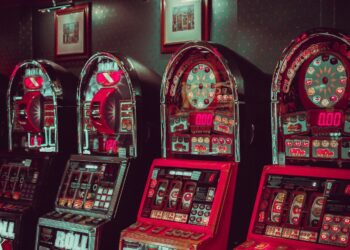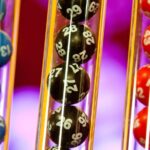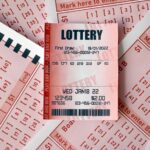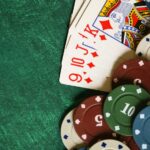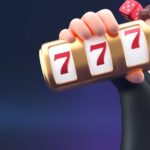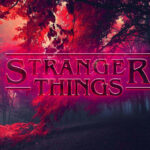One of the most enjoyable parts of limited competitive card games is the decks you get to use. When I first started playing limited, I felt like some of the limited lists were completely unplayable if you were even remotely good at the game. I always felt like some of the archetypes where just too good to be given open access, but that changed when I joined the varsitygaming limited list thread. I was equally impressed by the amount of thought put into some of the lists, and the quality of the people on the list. I had to make sure the thread was on the list for all of you to see.
The best limited list cards are not necessarily the ones that are necessarily the highest in price. The best limited list cards are the ones that are very likely to be printed in the main set, or at the very least in the sideboard. The best limited list cards are the ones that are worth playing in your sealed deck.
The best limited list cards worth playing are ones that are dominant in the format you are playing, they are not overly expensive, and are not popular in the format you are playing. When writing my articles I want to cover the best options throughout the format, not only the top performing cards in the format, so my articles are likely to be biased in my opinion.. Read more about best yugioh cards 2020 and let us know what you think.
Konami sometimes produces a card that is just too wonderful to be overlooked. However, prohibiting it would be a huge mistake.
As a result, it gets added to the restricted list.
A common rule of thumb is that cards on the limited list are broken, but not to the point of being banned.
Even yet, most individuals are undoubtedly pretty frightened by the whole list, given all the choices offered.
And believe me when I say that certain restricted cards are so strong that they’re definitely better than a lot of the banned cards.
15. International Day of Peace
There isn’t a stall deck out there that doesn’t have One Day of Peace in it.
However, if you haven’t included it in your deck, you’re losing out.
One Day of Peace is also quite straightforward: it enables both players to draw a card and protects both players from receiving damage until the end of your opponent’s turn.
As a consequence, the order in which you play this card may become crucial.
In most instances, you should complete your combat phase before using this to inflict damage.
This card, on the other hand, may be used to negate damage from other cards, such as Power Bond, which happens at the conclusion of your turn.
Exodia the Forbidden Exodia the Forbidden Exodia the Forbidden Exodia the Forbid
Nothing beats winning a battle solely on the basis of drawing particular cards, right?
When most Exodia players first saw this deck, they thought the same thing.
If you’ve never heard of this card before, it basically means that if you draw Exodia’s head, arms, and legs (5 cards in all), you’ll win the duel.
It’s true that playing against an Exodia player is a pain. You lose without playing a single card after they spend an eternity on their first turn.
Exodia, on the other hand, may be very entertaining since it’s a challenge to see whether you’ll be able to draw your whole deck in a single round.
There are many different Exodia decks available, and it’s certainly worth trying at least once to see what all the fuss is about.
Pankratops, the Dinowrestler
Dinowrestler Pankratops has been gaining popularity recently as more people become aware of this little-known card.
Here’s how it works:
You may special summon Dinowrestler Pankratops from your hand if your opponent controls more monsters than you.
Then you may tribute any Dinowrestler creature (including yourself) to target and destroy any card controlled by your opponent.
So, essentially, any of your opponent’s cards are destroyed for free – and it’s a really simple monster to summon.
This may also be used for a Xyz or Link summon, which is a huge advantage.
12. There is a danger! Nessie!
Danger! Nessie! It may seem to be a bit of a risk to utilize… However, as long as you are able to trigger its effect, you will win.
You have the ability to trigger Danger! Nessie! in your hand, and your opponent has to discard a card at random.
If the selected card isn’t Danger! You may special summon Nessie! to the field and draw a card from it.
If it was Danger! on the card, I’d be all over it. Nessie! You may then replace it with another Danger! card in your hand.
Obviously, you shouldn’t play this card if you’re playing a deck like Exodia and can’t afford to risk discarding your victory condition.
However, for most other decks, this is a fantastic option.
11. Are you in danger? Tsuchinoko?
You’re probably wondering why I didn’t mention which Danger! card to put in your hand for Danger! Nessie!
So, what’s the matter, Danger!? Tsuchinoko? It’s possible to be that card.
This is essentially the same as Danger! The sole difference between Nessie and Danger! is the impact that happens when Danger!? Tsuchinoko? gets thrown out.
You may just special summon it on discard.
This is a great effect since it enables you to summon a level 3 monster for almost little money.
Furthermore, since this card is always special summoned, it’s an excellent material for rank 3 Xyz monsters like The Phantom Knights of Break Sword.
Army Re-enforcement is number ten.
I have no idea what Konami was thinking when they decided to make this card limitless.
You can search from such a large number of creatures, and you’re not restricted to doing so just once each turn.
Army reinforcement is as straightforward as it gets.
You may add a level 4 or lower warrior monster from your deck to your hand when you activate this card.
There are hundreds of creatures that match this description, including many great warrior monsters.
As a consequence, Reinforcement of the Army may be used in almost any warrior deck. And it’d be difficult to find a warrior deck that didn’t include one.
9. Teleportation in an Emergency
Emergency Teleport isn’t as adaptable as Army Reinforcement.
However, if you place it in a deck to which it belongs, you’ll soon discover how much more powerful it is.
You may special summon any level 3 or lower psychic monster from your hand or deck when you use Emergency Teleport, but you must banish it during the end phase.
This is a fantastic card since it enables you to special summon any of your level 3 monsters for free in a deck like Virtual World.
Emergency Teleport is a significant boost to archetypes that utilize low-level psychic monsters, since finding particular creatures is always something that makes or breaks an archetype.
Sekka’s Light is number eight on the list.
Every player fantasizes of holding cards with the same amount of power as the legendary Pot of Greed.
Sekka’s Light is the card in question.
Sekka’s Light enables you to draw two cards as long as you don’t have any spells or traps in your graveyard.
Except for Sekka’s Light, you can’t use any spells or traps for the remainder of the fight.
You may also banish this card from your graveyard to reveal a monster in your hand, shuffle it into the deck, and draw a card by banishing it.
You shouldn’t be playing Sekka’s Light if you’re using spells or traps.
However, if you’re playing a deck with few (or no) spells or traps, Sekka’s Light is completely broken – it’s essentially a better version of the banned green pot we’re all familiar with.
7. Rebirth of a Monster
The most well-known card on this list is undoubtedly Monster Reborn.
And why is he so well-known, you may wonder.
Its notoriety stems from the fact that it was prohibited for almost a decade before being reintroduced just recently (as of this writing).
You may special summon any monster from either player’s graveyard with Monster Reborn.
Obviously, this is flawed, since you may either summon monsters to assist in special summoning extra deck monsters, or you can just resurrect an extra deck monster from either player’s graveyard to wreak havoc on your opponent.
6. Landscaping
Terraforming was a great method for players to ensure a duplicate of their field spell in their opening hand, especially with so many decks depending on field spells.
As a result, it has become restricted.
Terraforming lets you to take any field spell from your deck and place it in your hand.
Because it may search any field spell by itself, you can consider of this as a 4th copy of your field spell in your deck.
Alternatively, if you’ve already drawn your field spell, you may use Terraforming to get rid of the excess copies and ensure that your next draw is something beneficial.
Invoked, Mystic Mine, and Sky Striker are all viable alternatives for this card’s placement in a deck.
5. Miscellaneousaurus (Miscellaneousaurus)
Normally, I try to make these lists as broad as possible — or at the very least, applicable to a variety of archetypes.
Miscellaneousaurus, on the other hand, was so crazy that it had to be included.
Here’s how it works:
If Miscellaneousaurus is in your hand, you may discard it to make all Dinosaur monsters you control immune to your opponent’s card effects during your Main Phase.
Then you may special summon any Dinosaur monster with a level equal to the number of monsters you banished from the graveyard with this card and any other number of Dinosaur monsters you banished.
You can make your monsters untouchable with only a single card, and you may also special summon any monster from your deck (given you have enough monsters in the graveyard).
4. Feather Duster of Harpies
Harpie’s Feather Duster, like Monster Reborn, was prohibited for a long time.
It was also unbanned in 2020, much to the astonishment of many gamers.
When Harpie’s Feather Duster is activated, all of your opponent’s spells and traps are destroyed. That’s pretty much all there is to it.
It’s very straightforward.
However, as we’ve seen before, keeping things simple may be extremely successful.
If you’re playing a Harpie Lady deck, you should note that Harpie’s Feather Storm may also be used to find this card.
Gryphon Wing, on the other hand, is a card that may be used to counter Harpie’s Feather Duster.
However, it is much too specialized to play, thus you’ll seldom see it in a fight (if ever).
3. Irrational Burial
Even if we were to rank the most popular restricted cards on this list, Foolish Burial may be the most popular since it supports so many different strategies.
Foolish Burial continues the tradition of simplicity by allowing you to send a creature from your deck to your graveyard.
This may be perplexing to older (or brand-new) gamers.
However, almost every Yu-Gi-Oh archetype now includes an effect that is activated when a particular monster is put to the graveyard.
Eldlich, Virtual World, Drytrons, Cyber Dragon, Dragon Link, Adamancipator, Burning Abyss, and so on may all benefit from this. You’ve probably figured it out by now, but the list continues on and on.
2. The Grave’s Call
Getting a solid beginning hand isn’t as difficult as it once was.
However, not being able to play out a strong beginning hand is every player’s greatest fear.
What exactly do I mean?
Called by the Grave is here to assist if you’ve been caught in a hand trap.
You may banish any creature in your opponent’s graveyard after triggering Called by the Grave.
The effects of that monster (and any others with the same name) are then nullified until the end phase.
Because it requires a player to discard the monster before triggering its effect, this is an excellent card to employ against hand traps like Ash Blossom and Joyous Spring.
Raigeki, No. 1
Finally, Raigeki, we reach the top of this list.
Because this card is very ancient, most players are already familiar with it. New players, on the other hand, should be ecstatic to hear about this card (if they’ve never seen it before).
Raigeki is like Harpie’s Feather Duster’s monster counterpart:
All of your opponent’s creatures are destroyed.
Needless to say, this is a fantastic bargain since it functions similarly to a black hole while without destroying your side of the field.
Surprisingly, there is a card named Anti Raigeki that serves as a counter to this card.
However, it is much too niche to be performed nowadays.
If you’re using Raigeki, you should be more worried about spell negation in general than anything else.
You’ve probably seen the phrase “Limited List” at the end of words like “Limited List” or “Limited List.” It basically means, “This card can only be included in certain events or decks, depending on the format.” Limited List cards are great to have in your collection, but are not necessarily worth playing competitively, because the chances of them getting played are slim at best.. Read more about best yugioh cards of all time and let us know what you think.
Related Tags
- most op yugioh cards 2020
- must have yugioh cards for collection
- best yugioh cards 2021
- top 100 strongest yugioh cards
- best yugioh cards to sell


















